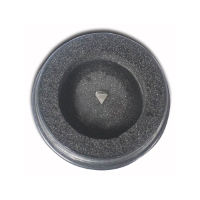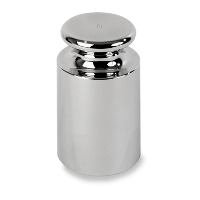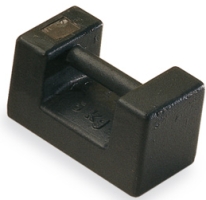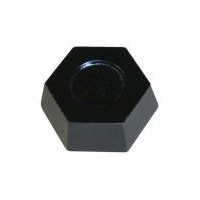Weight Buying Guide
The purpose of this weight buying guide, is to help you select the correct weights for your application. If you need further help please do not hesitate to contact us.
Why do you need weights?
The main reason you will require weights, is to perform regular checks on your weighing balance or scale, to ensure it is performing correctly, for more information, please see our full guide on performing checks on weighing balances and scales. Weights can also be used for performing a calibration/adjustment to a weighing balance or scale. As well as other applications that require a precise mass.
How do you choose which weights are required?
Which weights you require depend on the application you are using them for, if for example you are using them for checking a balance/scale, you can refer to our full guide on scale/balance checks which will help you choose the relevant test points you require, which will then enable you to choose the required weight denominations and class.
What are weight classes?
There are several different weight class systems: OIML, ASTM and NIST. These weight class systems divide weights into different classes based on the tolerance of weight required. In the the UK we use the OIML weight classification system, you can see the OIML tolerances by class in the below table.
OIML Tolerance Table
| Class Tolerances ( + / – mg) | |||||||
| Denomination | E1 | E2 | F1 | F2 | M1 | M2 | M3 |
| 5000 kg | N/A | N/A | 25000 | 80000 | 250000 | 800000 | 2500000 |
| 2000 kg | N/A | N/A | 10000 | 30000 | 100000 | 300000 | 1000000 |
| 1000 kg | N/A | 1600 | 5000 | 16000 | 50000 | 160000 | 500000 |
| 500 kg | N/A | 800 | 2500 | 8000 | 25000 | 80000 | 250000 |
| 200 kg | N/A | 300 | 1000 | 3000 | 10000 | 30000 | 100000 |
| 100 kg | N/A | 160 | 500 | 1600 | 5000 | 16000 | 50000 |
| 50 kg | 25 | 80 | 250 | 800 | 2500 | 8000 | 25000 |
| 20 kg | 10 | 30 | 100 | 300 | 1000 | 3000 | 10000 |
| 10 kg | 5 | 16 | 50 | 160 | 500 | 1600 | 5000 |
| 5 kg | 2.5 | 8 | 25 | 80 | 250 | 800 | 2500 |
| 2 kg | 1 | 3 | 10 | 30 | 100 | 300 | 1000 |
| 1 kg | 0.5 | 1.6 | 5 | 16 | 50 | 160 | 500 |
| 500 g | 0.25 | 0.8 | 2.5 | 8 | 25 | 80 | 250 |
| 200 g | 0.1 | 0.3 | 1 | 3 | 10 | 30 | 100 |
| 100 g | 0.05 | 0.16 | 0.5 | 1.6 | 5 | 16 | 50 |
| 50 g | 0.03 | 0.1 | 0.3 | 1 | 3 | 10 | 30 |
| 20 g | 0.025 | 0.08 | 0.25 | 0.8 | 2.5 | 8 | 25 |
| 10 g | 0.02 | 0.06 | 0.2 | 0.6 | 2 | 6 | 20 |
| 5 g | 0.016 | 0.05 | 0.16 | 0.5 | 1.6 | 5 | 16 |
| 2 g | 0.012 | 0.04 | 0.12 | 0.4 | 1.2 | 4 | 12 |
| 1 g | 0.01 | 0.03 | 0.1 | 0.3 | 1 | 3 | 10 |
| 500 mg | 0.008 | 0.025 | 0.08 | 0.25 | 0.8 | 2.5 | N/A |
| 200 mg | 0.006 | 0.02 | 0.06 | 0.2 | 0.6 | 2 | N/A |
| 100 mg | 0.005 | 0.016 | 0.05 | 0.16 | 0.5 | 1.6 | N/A |
| 50 mg | 0.004 | 0.012 | 0.04 | 0.12 | 0.4 | N/A | N/A |
| 20 mg | 0.003 | 0.01 | 0.03 | 0.1 | 0.3 | N/A | N/A |
| 10 mg | 0.003 | 0.008 | 0.025 | 0.08 | 0.25 | N/A | N/A |
| 5 mg | 0.003 | 0.006 | 0.02 | 0.06 | 0.2 | N/A | N/A |
| 2 mg | 0.003 | 0.006 | 0.02 | 0.06 | 0.2 | N/A | N/A |
| 1 mg | 0.003 | 0.006 | 0.02 | 0.06 | 0.2 | N/A | N/A |
Determining which weight class to use
We supply OIML class weights, you can select a class of weight based on the tolerance your application requires, you can use the above table for reference. If you would like more specific guidance on selecting the class of weight for a weighing balance or scale, please see our guide on scale/balance checks, which includes a table with weight classes matched to balance/scale readability or contact us for advice.
UKAS certified weights vs non-certified weights
To ensure the validity and integrity of your weighing results we recommend you use UKAS certified weights, non-certified weights do not have traceability.
Adjustable weights vs non-adjustable weights
Some manufacturers offer adjustable weights, which enables the weights to be adjusted if they drift. non-adjustable weights cannot be adjusted.
What is the difference between a calibration weight, test weight and a scale weight?
Weights are quite often referred to as calibration, test or scale weights. However there is no such thing as a specific calibration, test or scale weight. These are applications you may use a weight for, there are no weights made inherently for this purpose. When selecting weights you use your application to determine what tolerance you require and then use that desired tolerance to choose the required weight class.
Should you get a weight set or individual weights?
Weights can be bought either individually or in weight sets. If for example you only want to do checks on a single balance/scale, you may only need a few individual weights. However if you have multiple balances/scales with different ranges, you may be better off getting a full weight set. Weight sets also have the benefit of having one serial number for traceability.
Weight materials
We supply weights made of aluminium, stainless steel and cast iron. E2 weights and F1 weights are always made of stainless steel, except for 1mg – 5mg weights which are normally made of aluminium. M1 weights are available either in stainless steel or cast iron. Depending on your application, stainless steel maybe a better solution, for example for use in a clean room.
Weight form factors
Weights are available in several form factors:
 | Flat Sheet: Flat sheet weights are used for milligram denomination weights. |
 | Cylindrical: Cylindrical weights are normally made of stainless steel. They are not recommended for weight denominations of 5 KG or above as they can be harder to handle. |
 | Grip Bar: Grip bar weights can be made either of stainless steel or cast iron. They are the recommended form factor for 5KG and 10KG weights. They are also available in a 20KG denomination, however it is generally better to use 10KG weights if possible as 20KG can be hard to handle due to their weight. |
 | Hexagonal: Hexagonal weights are normally made of cast iron and are available in denominations of 1KG and 2KG. |

